Grievance letter template word
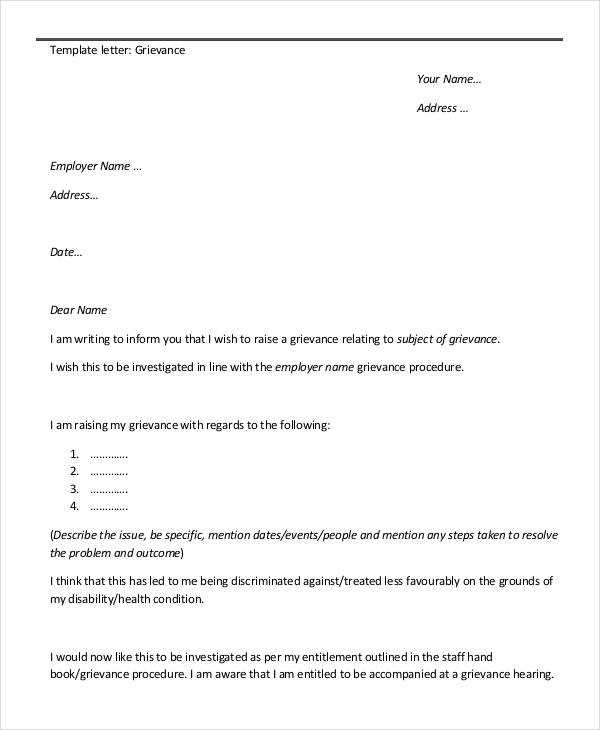
How to Structure a Grievance Letter
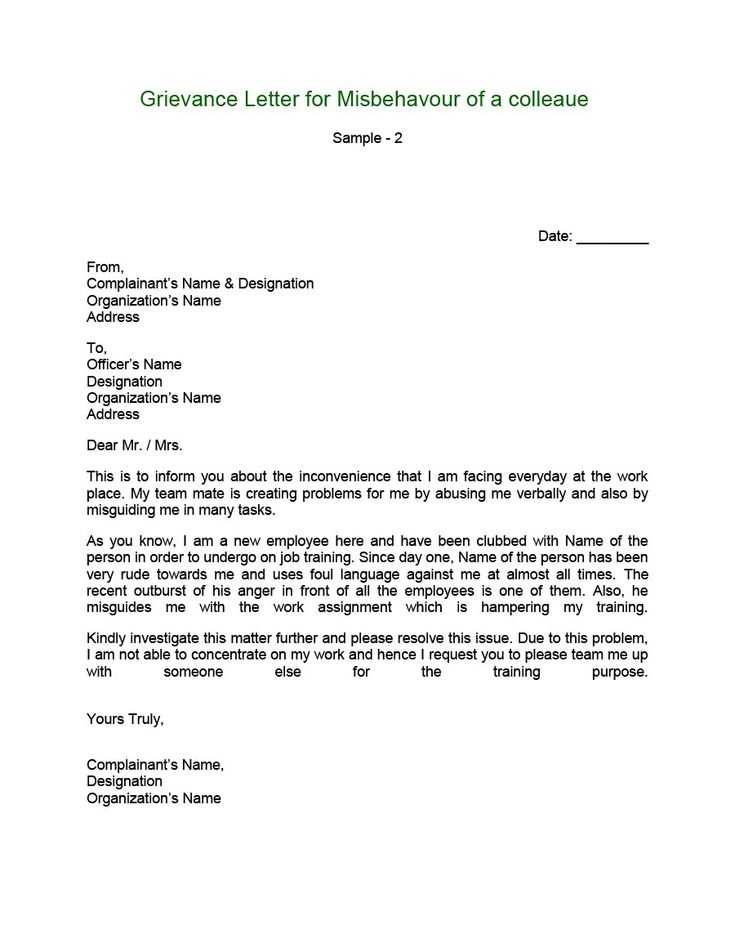
Start your letter with a polite greeting and address the recipient by their title and full name. Mention your purpose clearly, outlining the nature of your grievance. Focus on facts and avoid emotional language. Below is a basic structure for crafting your letter:
1. Contact Information
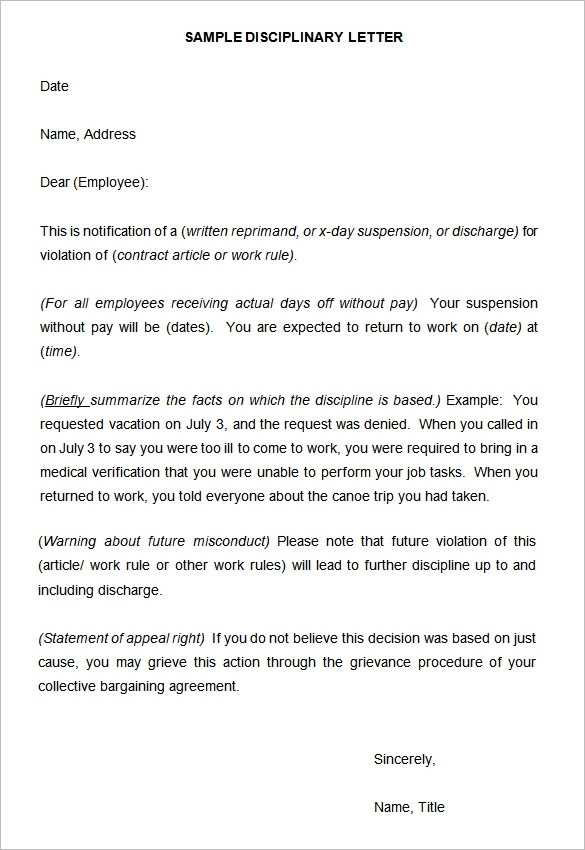
- Your name – State your full name clearly at the top of the letter.
- Your address – Include your current address or the one where you are reachable.
- Date – Ensure the date is included to indicate when the letter was written.
- Recipient’s name – Address the letter to the person responsible for addressing grievances.
- Recipient’s contact details – Mention the recipient’s title, position, and company name if applicable.
2. Introduction
Introduce yourself briefly. Be clear about the context in which you are writing the grievance letter. If applicable, state your relationship with the company or entity involved.
3. Description of the Issue
Describe the issue concisely but with enough detail. Provide dates, times, and any supporting facts that illustrate the situation. If there were previous attempts to resolve the issue, mention them. Avoid exaggerations or subjective opinions.
4. Expected Outcome
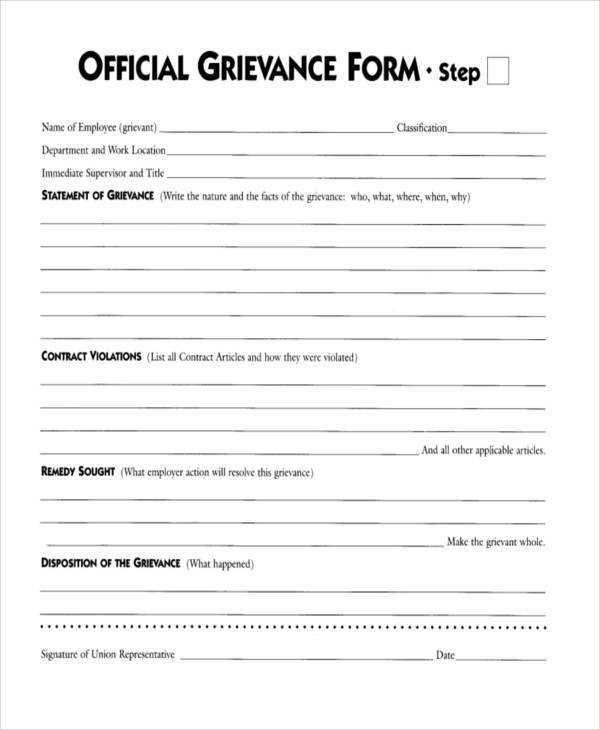
Clearly state the resolution you are seeking. Whether it is a refund, apology, or specific action, make sure your request is reasonable and straightforward.
5. Closing
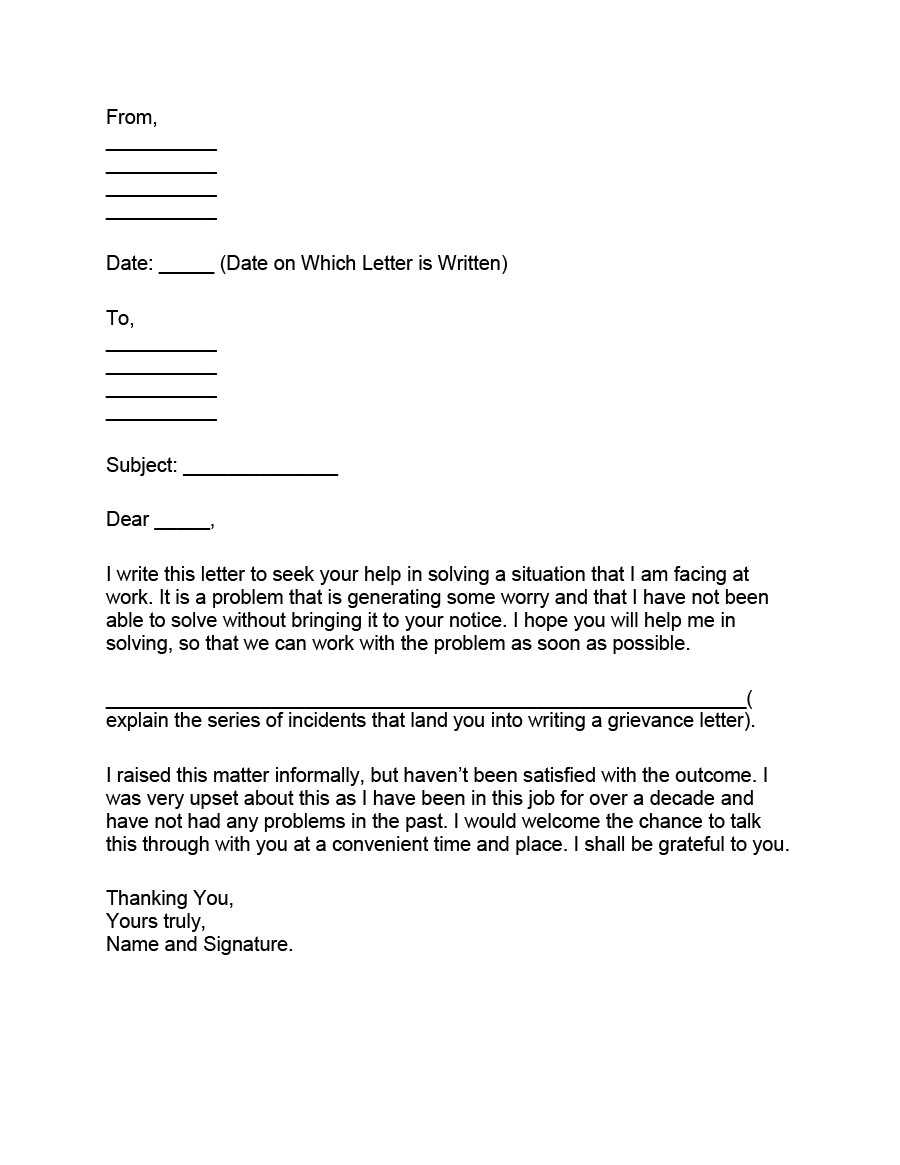
Thank the recipient for considering your grievance. Politely request a timely response and indicate your willingness to discuss the issue further if needed. End the letter with a courteous closing like “Sincerely” or “Best regards,” followed by your signature.
Sample Grievance Letter
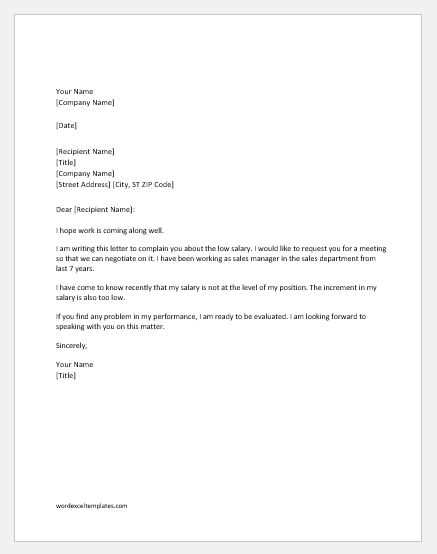
Here is an example based on the structure provided:
John Doe
1234 Elm Street
City, State, Zip Code
January 29, 2025
Mr. Richard Smith
Human Resources Manager
XYZ Corporation
5678 Oak Avenue
City, State, Zip Code
Dear Mr. Smith,
I am writing to formally address an issue I have encountered at work. On January 15, 2025, I submitted a request for vacation time, but I have not yet received any confirmation or response from the department. I have previously followed up via email and in person on January 20 and January 22, but the matter remains unresolved. I have attached copies of the correspondence for your reference.
As per company policy, I expect my request to be processed in a timely manner. I kindly ask that you confirm my vacation request or provide an alternative solution at your earliest convenience. I would appreciate a response by February 1, 2025.
Thank you for your attention to this matter. I look forward to your prompt resolution of this issue.
Sincerely,
John Doe
Grievance Letter Template Word: A Practical Guide
Understanding the Purpose of a Grievance Letter
Key Elements to Include in Your Complaint Letter
How to Format Your Letter Correctly
Tips for Writing a Clear and Concise Complaint
Common Errors to Avoid When Writing Your Letter
Next Steps After Submitting Your Complaint
Focus on clarity and directness. A grievance letter should convey your concern in a straightforward manner. Start with a clear subject line or heading, outlining the reason for the complaint. Describe the issue in detail, including dates, names, and specific events related to the grievance.
Include essential elements in your letter: a proper salutation, a clear description of the problem, your efforts to resolve it, and the outcome you expect. Be polite but firm, and avoid unnecessary emotional language that might distract from the facts.
Formatting matters. Make sure your letter is well-organized. Use paragraphs to break up sections, and keep each one focused on a specific aspect of the complaint. Use bullet points or numbered lists to present key details clearly. Stick to a professional tone throughout the document.
Keep your writing to the point. Avoid long-winded explanations or irrelevant details. The aim is to make your complaint clear without overloading the reader with unnecessary information. If applicable, reference policies or procedures that relate to your complaint.
Avoid these common mistakes: don’t mix personal grievances with professional concerns, avoid vague language, and refrain from making threats or demands that aren’t reasonable. Keep the letter free of spelling or grammar errors, as these can undermine your credibility.
After submitting your letter, follow up within a reasonable timeframe if you haven’t received a response. If the issue remains unresolved, consider escalating the complaint through appropriate channels.